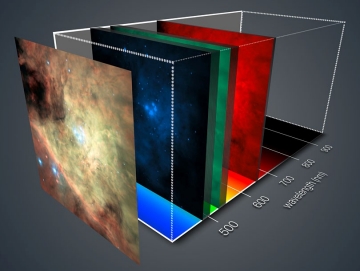EWASS 2016, Athens, Greece, 4 – 8 July 2016
MUSE, the new VLT wide field (1‘×1‘) optical integral field spectrograph, was successfully commissioned in 2014. Thanks to its unrivaled 3D capabilities, MUSE has truly opened up exciting new perspectives in many different areas of observational astrophysics, changing the way complex questions are tackled over a broad range: including planetary nebulae, star forming regions, supernova remnants, stellar populations, local and distant galaxy kinematics, AGN physics and feedback, lensing, clusters and proto-clusters, and much more. This EWASS 2016 Symposium will cover the full range of topics tackled by MUSE observations.

